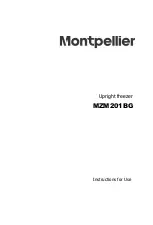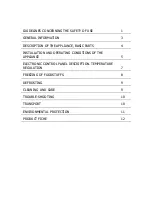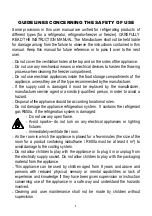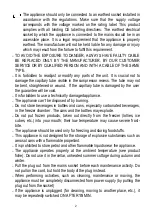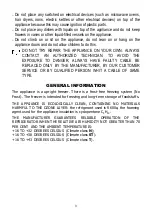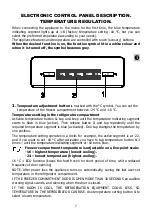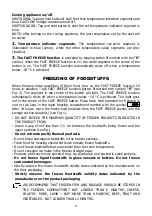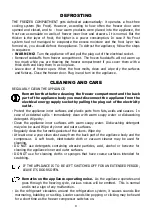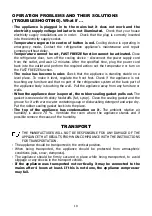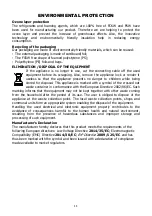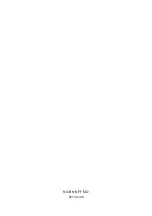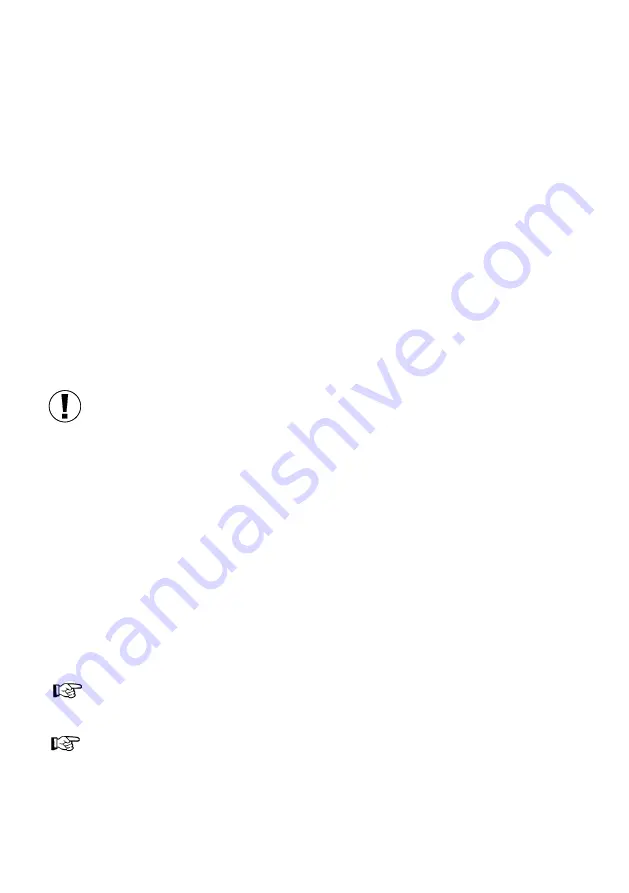
9
DEFROSTING
THE FREEZER COMPARTMENT gets defrosted automatically: it operates a frost-free
cooling system (No Frost). However, according to how often the freezer door were
opened and closed, and to - how warm products were placed into the appliance, the
frost can accumulate on walls of freezer inner liner and drawers. It is normal. But the
thicker is the layer of frost, the higher is a power consumption. In case if No Frost
system had not managed to evaporate the excess moisture and the frost layer has
formed on, you should defrost the appliance. To defrost the appliance, follow the steps
in sequence:
•
WARN ING!
Turn the appliance off and pull the plug out of the electrical socket.
•
Remove foodstuffs from freezer compartment. The frozen foodstuffs will not warm up
too much while you are thawing the freezer compartment if you cover them with a
thick cloth and keep them in a cool place.
•
Leave door of freezer open. When the frost melts, clean and wipe dry the surfaces
and fixtures. Close the freezer door. Plug in and turn on the appliance.
CLEANING AND CARE
REGULARLY CLEAN THE APPLIANCE.
Remember that before cleaning the freezer compartment and the back
part of the appliance body you must disconnect the appliance from the
electrical energy supply socket by pulling the plug out of the electricity
outlet.
•
Protect the appliance inner surfaces and plastic parts from fats, acids and sauces. In
case of accidental spills – immediately clean with warm soapy water or dishwashing
detergent. Wipe dry.
•
Clean the appliance inner surfaces with warm soapy water. Dishwashing detergent
may also be used. Wipe dry inner and outer surfaces.
•
Regularly clean the hermetic gaskets of the doors. Wipe dry.
•
At least once a year clean dust away from the back part of the appliance body and the
compressor. A soft brush, electrostatic cloth or vacuum cleaner may be used for
cleaning.
•
DO NOT use detergents containing abrasive particles, acid, alcohol or benzene for
cleaning the appliance inner and outer surfaces.
•
DO NOT use for cleaning cloths or sponges that have coarse surfaces intended for
scrubbing.
IF THE APPLIANCE IS TO BE LEFT SWITCHED OFF FOR AN EXTENDED PERIOD,
LEAVE ITS DOORS OPEN.
Remarks on the appliance operating noise.
As the appliance operates and
goes through the freezing cycle, various noises will be emitted. This is normal
and is not a sign of any malfunction.
•
As the refrigerant circulates around the refrigeration system, it causes sounds like
murmuring, bubbling or rustling. Louder sounds like popping or clicking may be heard
for a short time as the freezer compressor switches on.
Summary of Contents for MZM201BG
Page 1: ...Upright freezer MZM201BG Instructions for Use...
Page 15: ...13...

